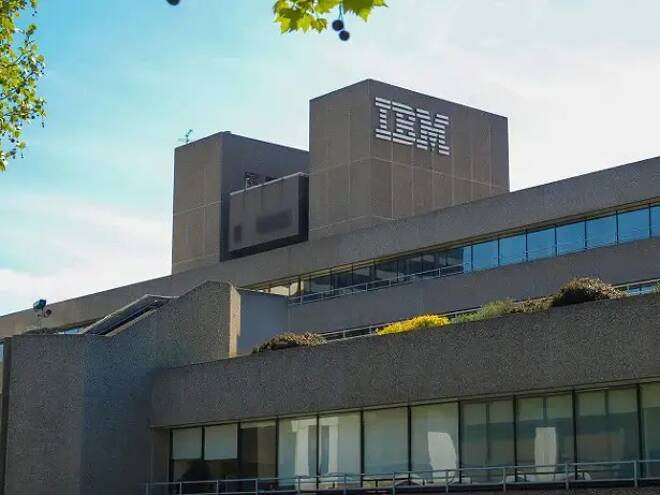Advertisement
Advertisement
IBM at Cusp of Historic Breakout
By:
The old school tech giant has been testing 8-year resistance for the last 6 weeks and looks ready to break out.
International Business Machines Corp. (IBM) has been testing 8-year resistance for the last six weeks and looks ready to break out, entering the first secular uptrend since 2013’s all-time high at 215.90. A fourth quarter spin-off of poorly-performing legacy divisions has attracted new investors but macro tailwinds and the tech behemoth’s blockchain business are also contributing to the upside, generating a 17% year-to-date return.
Q4 Spin-off Attracting Investors
The stock rose 3.8% in April after beating Q1 2021 top and bottom line estimates and reaffirming fiscal year guidance. The company has continued an acquisition binge into June after adding seven smaller operations earlier this year, in an effort to populate the new high growth operation. That entity is now called ‘NewCo’, a generic placeholder until IBM executives figure out a more appropriate name.
The Managed Infrastructure Services (MIS) business is scheduled to spin off into a publicly-traded entity by year’s end. Core operations will then focus on IBM’s rapidly-growing cloud and artificial intelligence businesses. It makes sense that NewCo will command a higher price-to-earnings ratio (P/E) than its predecessor, marking the company’s most ambitious initiative so far this century. Unfortunately, pre spin-off investors will also get proportional shares of the legacy operation, which could sink even further in coming years.
Wall Street and Technical Outlook
Wall Street consensus has barely budged so far in 2021, highlighting major skepticism after years of misguided management. IBM is now rated as a ‘Hold’ based upon 5 ‘Buy’, 9 ‘Hold’, 1 Underweight, and 2 ‘Sell’ recommendations. Price targets currently range from a low of $115 to a Street-high $185 while the stock is set to open Monday’s session about $2 above the median $145 target. Additional upside may be limited with this placement until analysts jump onboard the bull train.
The stock hit an all-time high in the first quarter of 2013 and entered an historic decline, carving a long string of lower highs and lower lows into March 2020’s 11-year low at 90.56. The first recovery wave stalled at 135 in June, ahead of an April 2021 breakout that reached the 8-year trendline of lower highs at month’s end. Price action has held like glue to this critical level in the last six weeks, raising odds for a breakout that targets the 2020 high at 159.
For a look at all of today’s economic events, check out our economic calendar.
Disclosure: the author held no positions in aforementioned securities at the time of publication.
About the Author
Alan Farleyauthor
Alan Farley is the best-selling author of ‘The Master Swing Trader’ and market professional since the 1990s, with expertise in balance sheets, technical analysis, price action (tape reading), and broker performance.
Did you find this article useful?
Latest news and analysis
Advertisement
